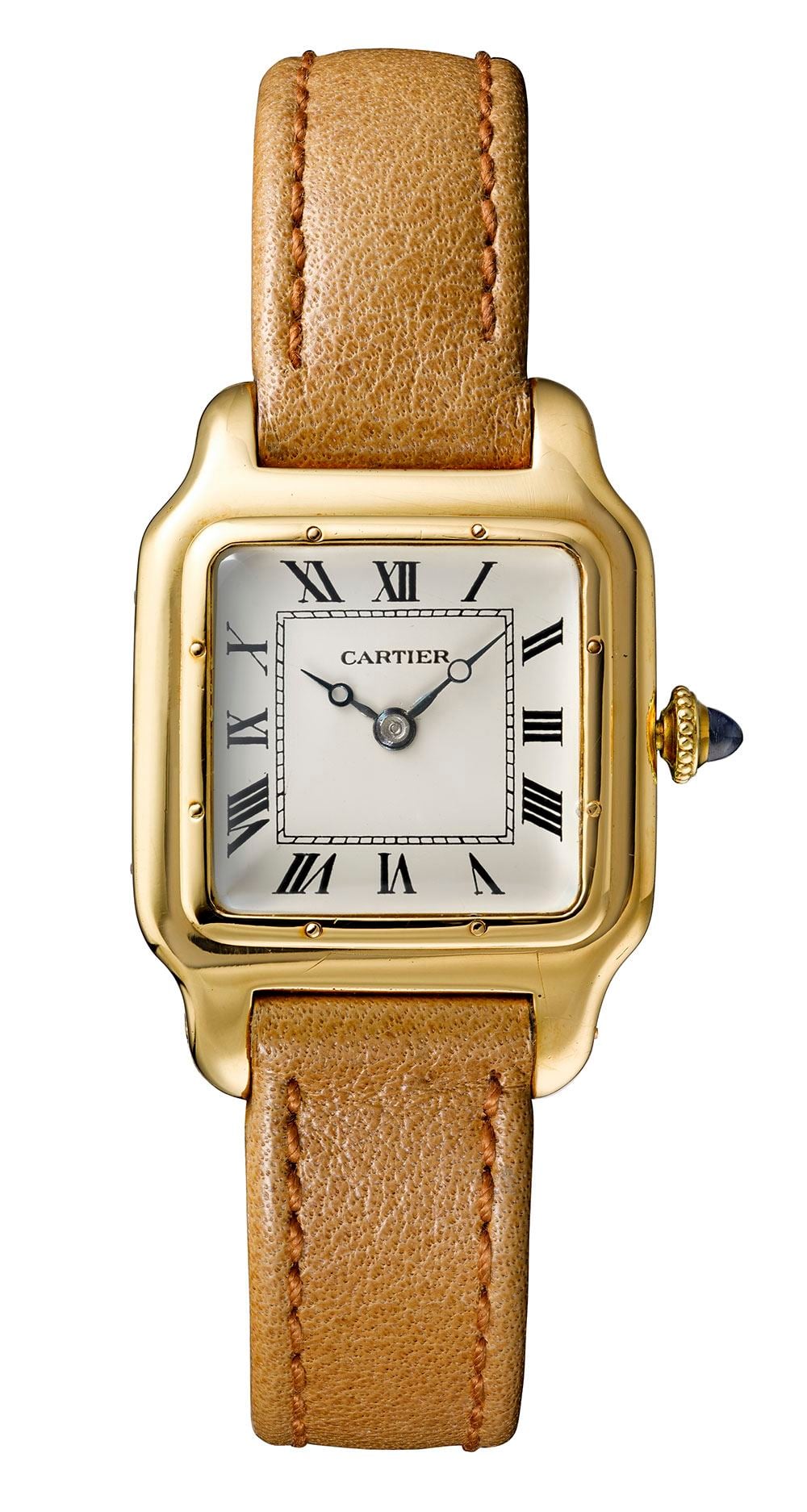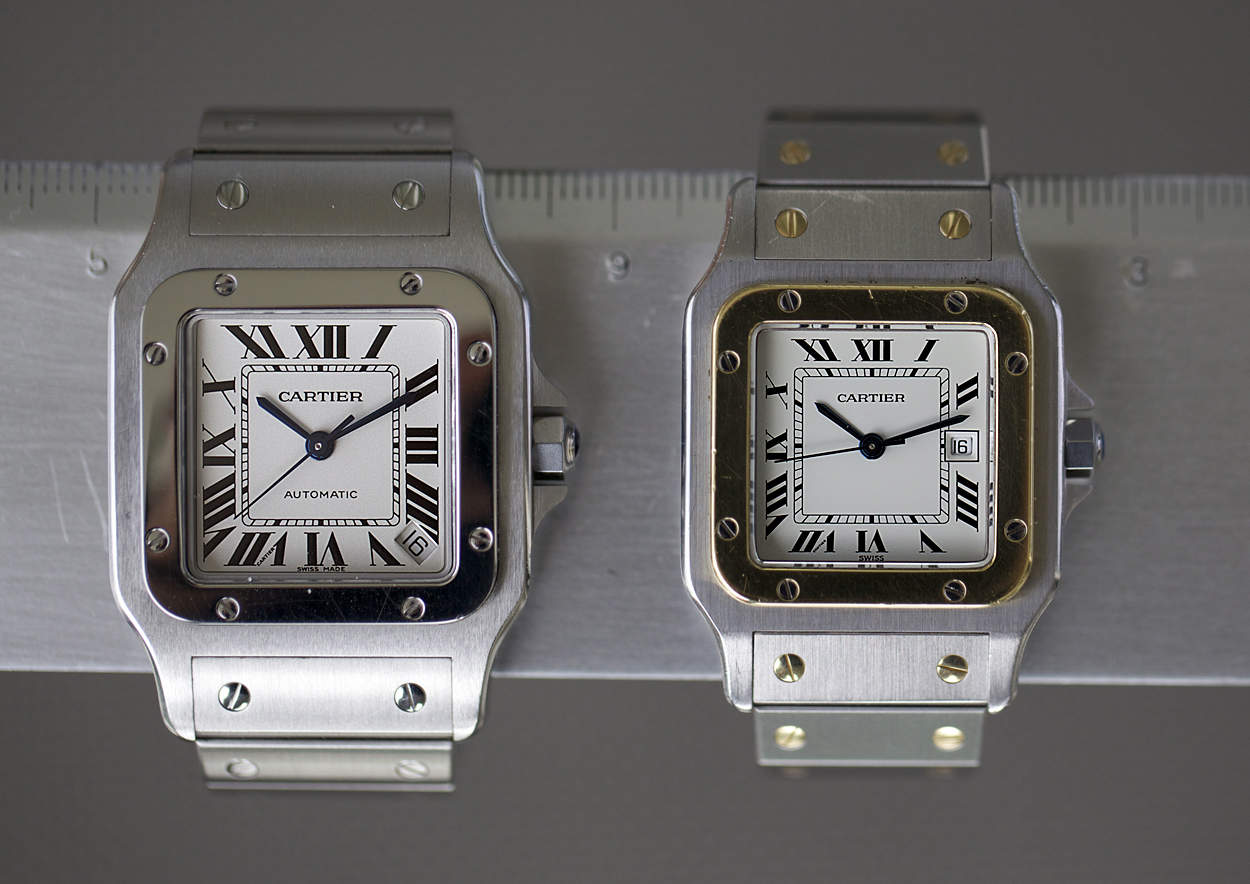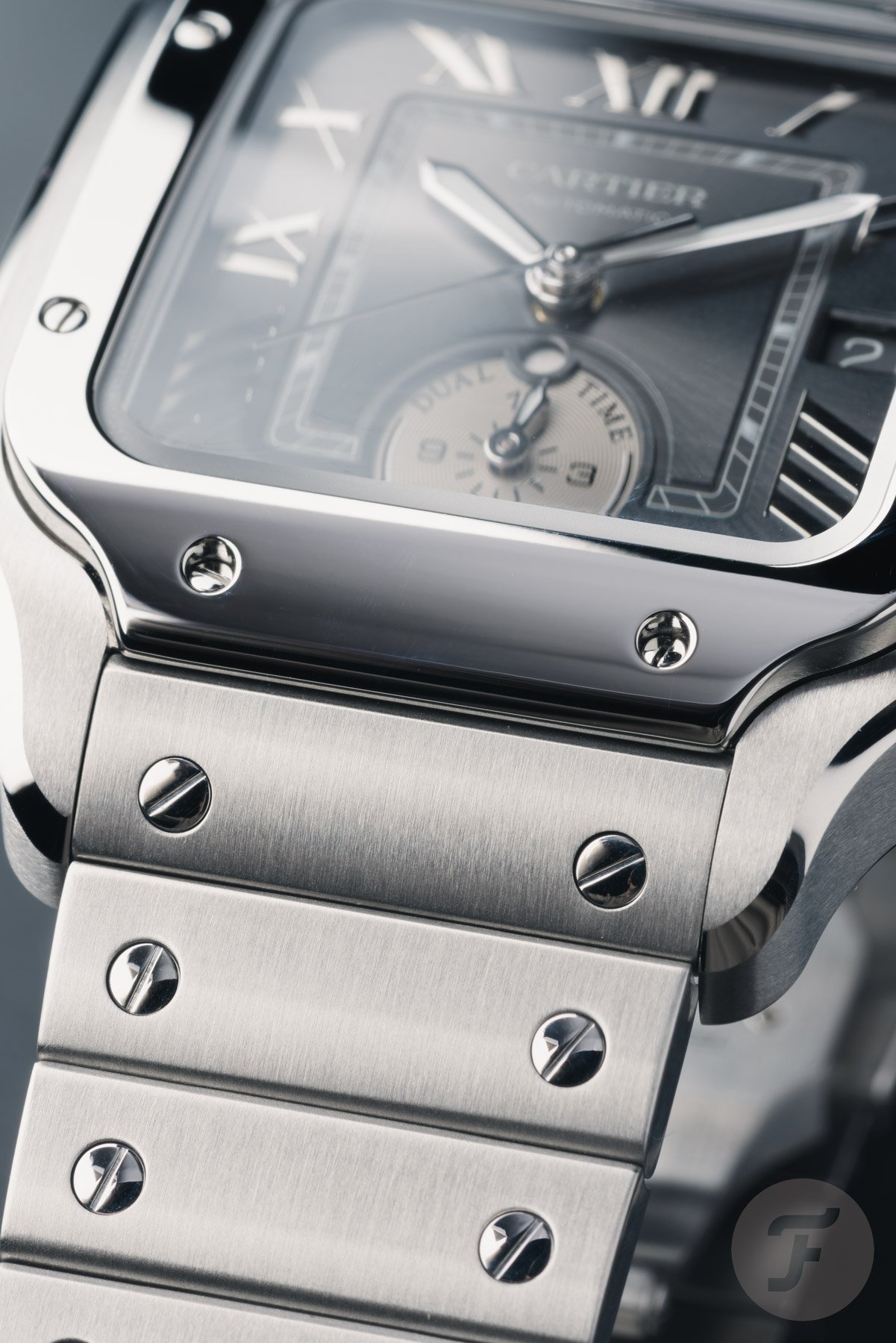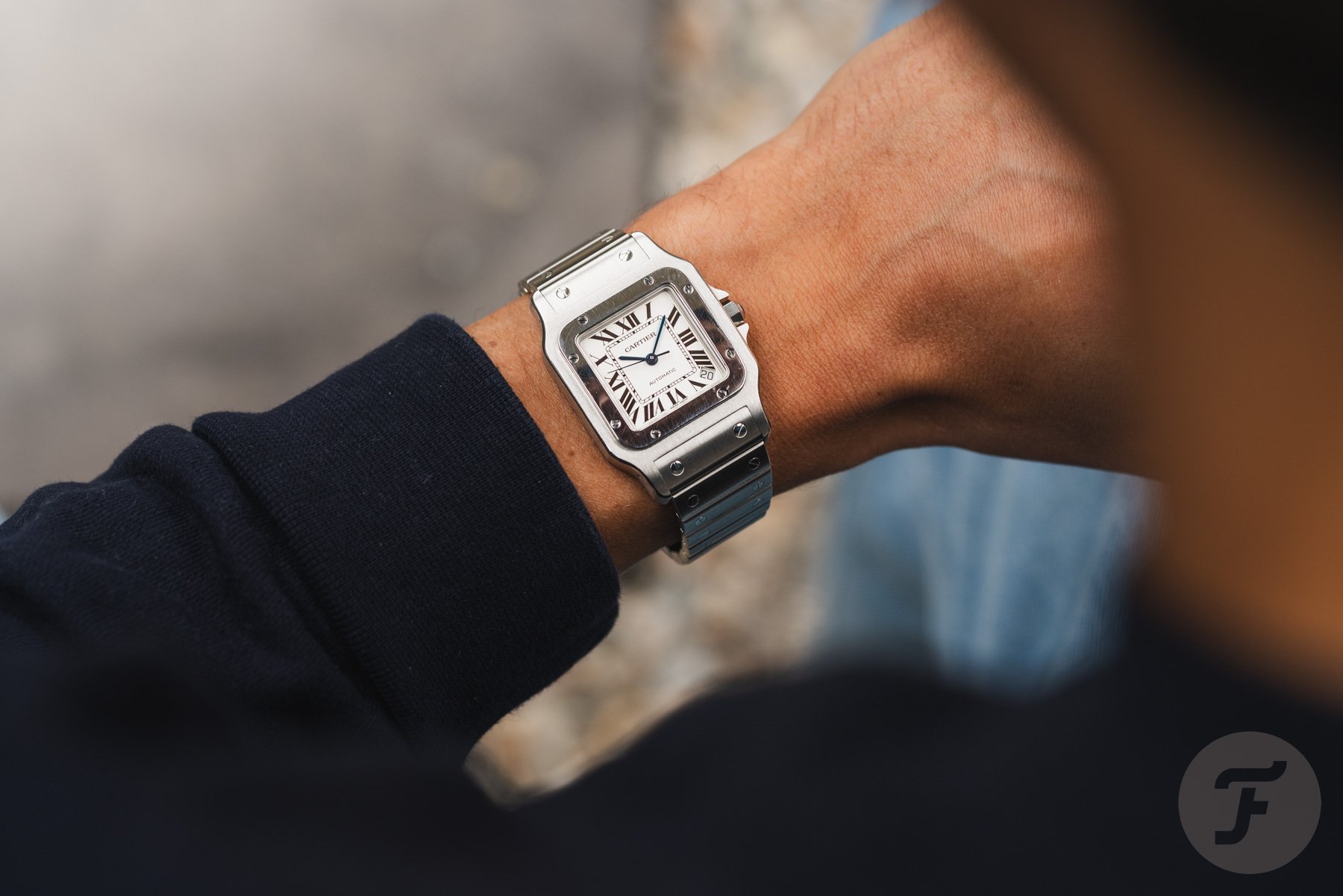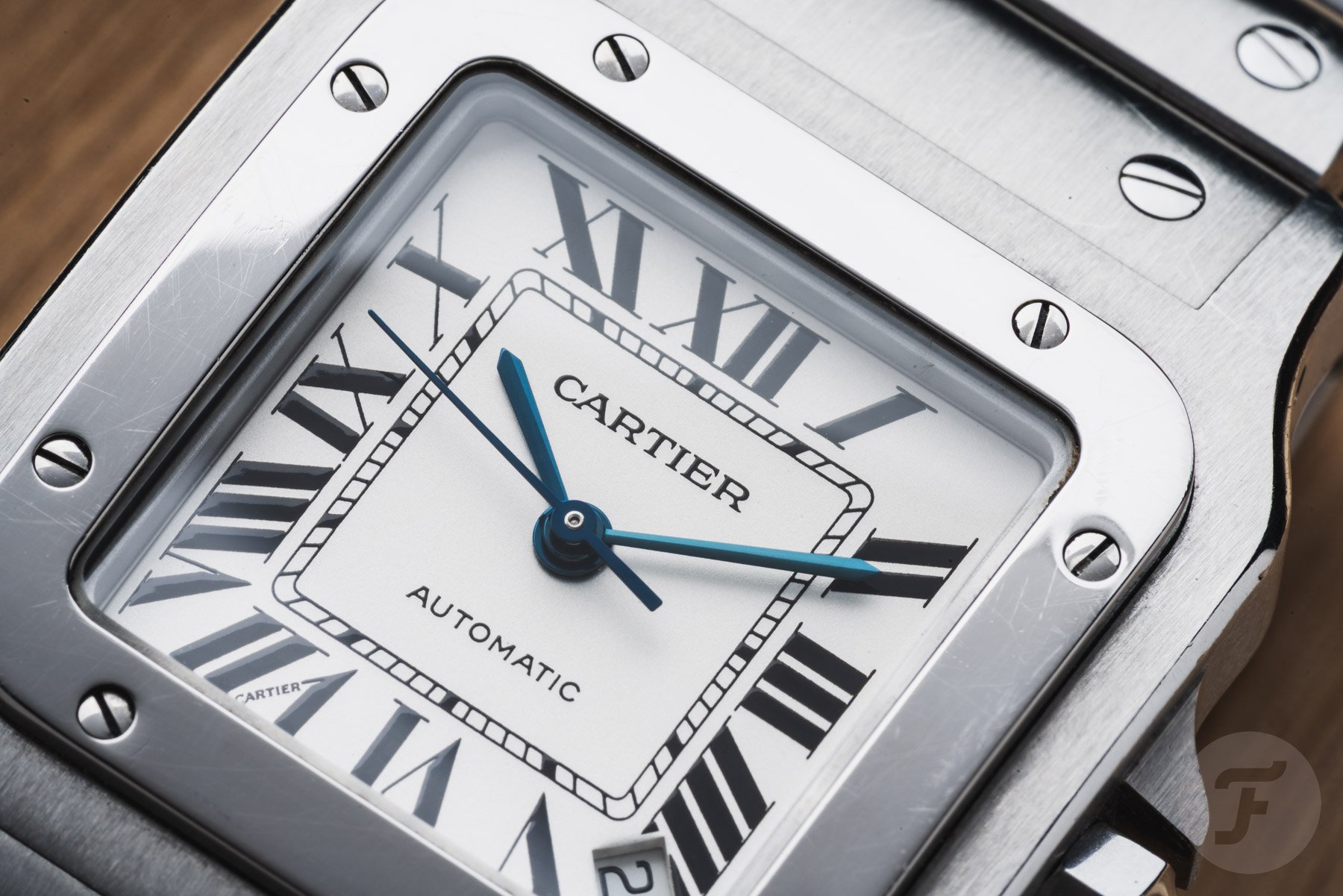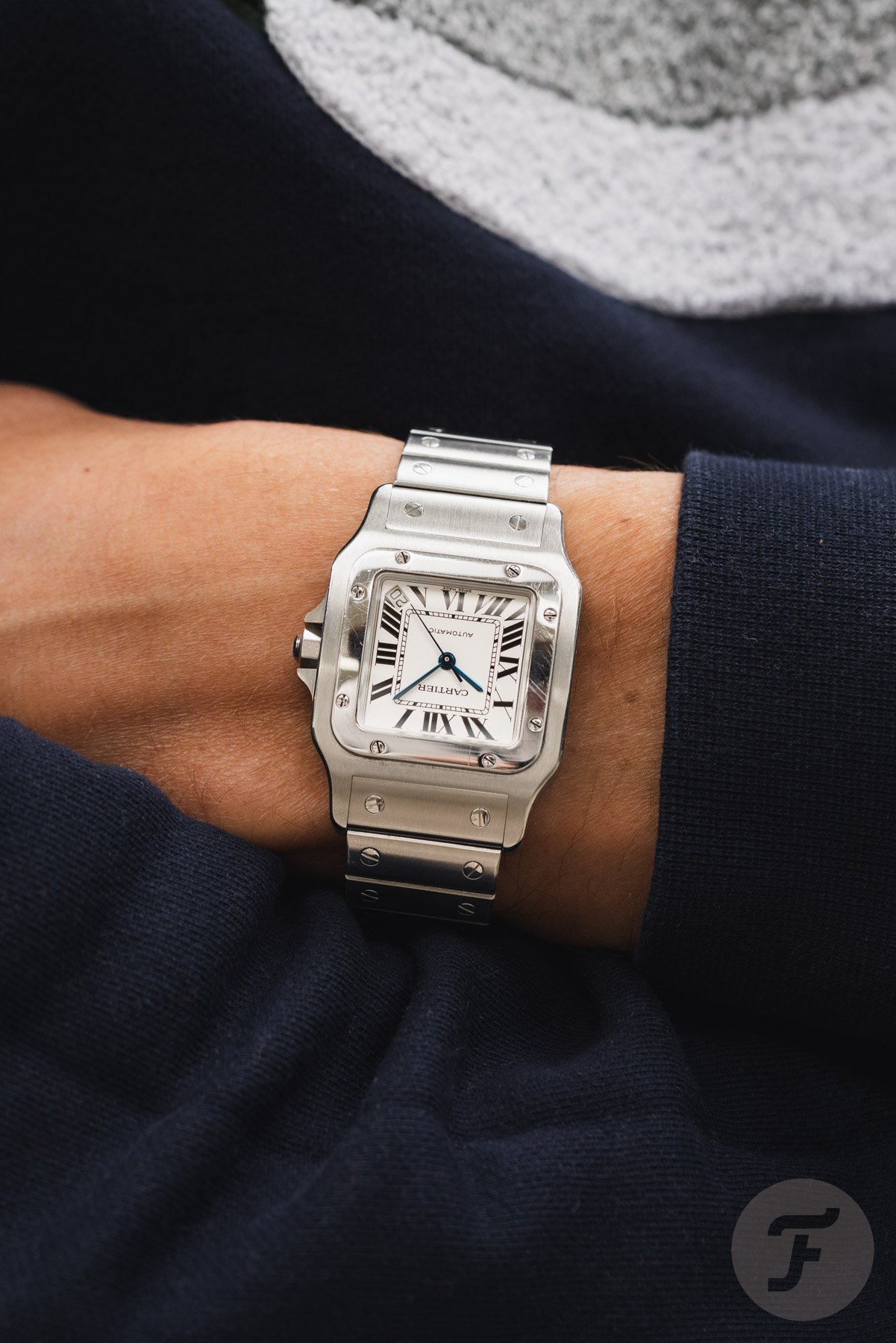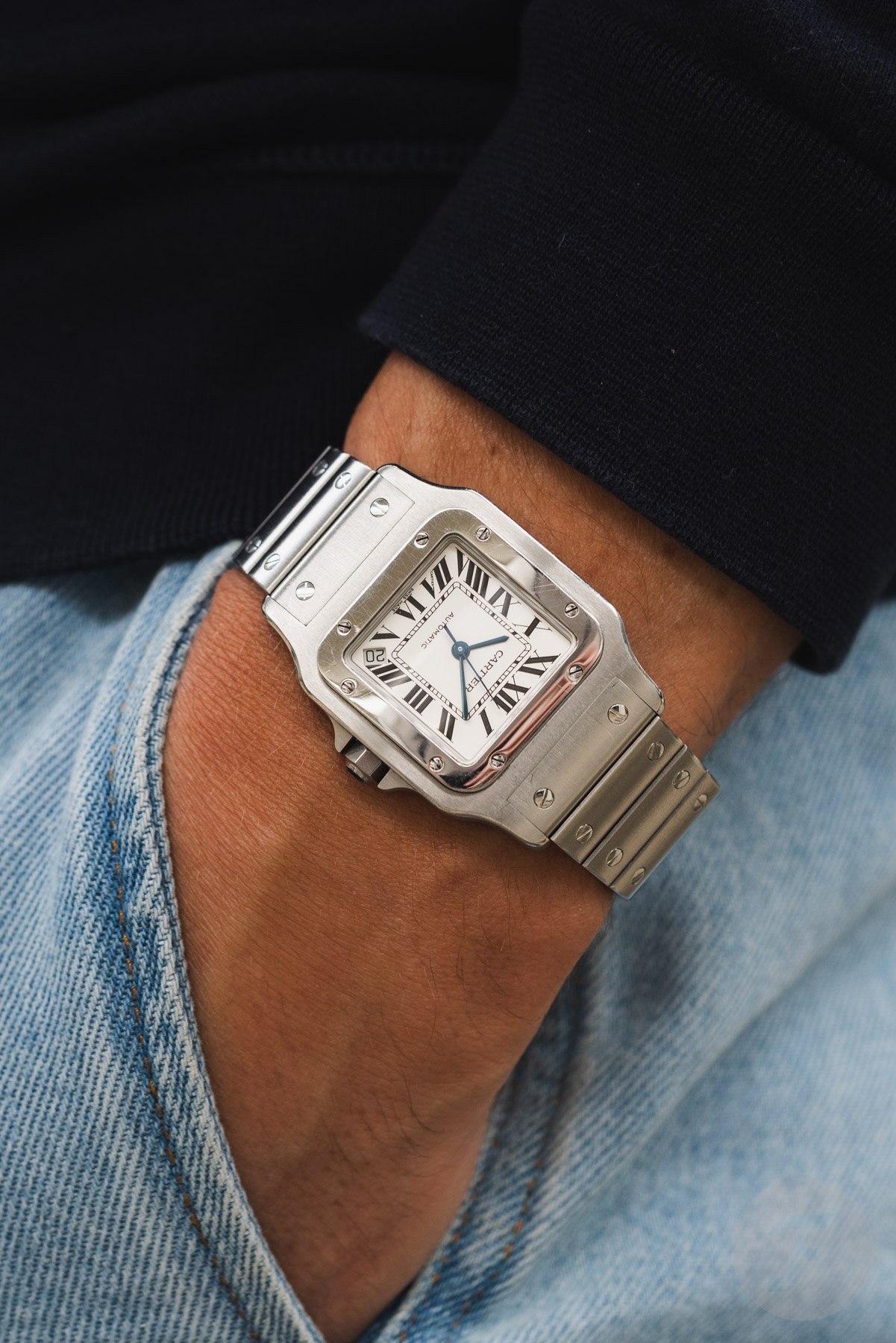Exploring Evergreens: The Cartier Santos Galbée XL
Welcome to another installment of Exploring Evergreens, a series here on Fratello in which we get our hands on watches that have been around for over a decade — or long enough to feel ubiquitous — and ask ourselves if they’ve managed to stand the test of time. We’ll address whether they’re still relevant, how they feel today, and, ultimately, if they’re worth their current prices. In some cases, when the authors own/have owned the specific pieces, they’ll dig into how their feelings about them have evolved and whether or not they still deserve a spot in their collections. Today, I’m honored to feature my beloved, all-steel Cartier Santos de Cartier Galbée XL from 2006. Yes, I think that’s indeed its official full name (as redundant as it may be).
Over the past couple of years, I’ve written much about my Cartier Santos Galbée. That’s because it’s one of my favorite watches, period. So if you’re looking for a very objective article on this watch, there are plenty of historical overviews out there, but you don’t have to go that far. I think the late George Cramer wrote one of the best overview articles when Cartier decided to discontinue the Santos Galbée XL in 2016. However, I’ll also start with a quick historical overview for the readers who don’t feel like clicking away.
The history of the Cartier Santos (de Cartier)
Louis Cartier developed this now-famous square wristwatch for his pilot friend Alberto Santos-Dumont. The latter thought it was annoying to take out his pocket watch while attempting to break flight records when he lived in Paris. In 1904, Louis Cartier presented him with the Cartier Santos, a square yellow gold wristwatch with screws that held down the crystal. Some say the inspiration for its robust design comes from the Eiffel Tower and that the Roman numerals reference the layout of the streets and wide boulevards of Paris.
In 1911, the Cartier Santos went into regular production, and until 1978, it was the only type of Santos available. That means it was always made of gold or platinum and only available on a (leather) strap. In that sense, the Cartier Santos was more of a dress watch for the happy few than a sports watch for the masses. In 1978, Cartier introduced the first steel and gold Santos de Cartier. The unique thing about this Santos was that it also came with a matching steel bracelet with gold screws. While this bracelet wasn’t integrated with the case in the truest sense, it was perhaps Cartier’s answer to the trend that the Royal Oak, Nautilus, and Ingenieur started earlier that decade. However, compared to those watches, it cost less, especially the full-steel version that came out later.
(My) Santos de Cartier Galbée XL
The first version of the Santos de Cartier still had a few sharp angles, especially on the transition from the case to the lugs. Also, the links on the bracelet were quite “square” (well, actually, rectangular). Because of that, it’s often referred to as the Santos Carrée. In 1987, Cartier introduced the curvier Santos de Cartier Galbée. It did away with those hard corners, and the links on the bracelet got a convex shape. Finally, in 2005, Cartier introduced the Santos de Cartier Galbée XL ref. 2823. This is the watch I’m so fond of. It has a 32mm diameter and 45mm lug-to-lug length.
Inside, there’s an ETA 2892 automatic movement, which Cartier designates as caliber 049. It runs at a frequency of 28,800vph, features 21 jewels, and holds a power reserve of 42 hours. It isn’t an impressive in-house movement (or square-shaped, for that matter), but for the price, I think it’s still a capable and reliable caliber. Besides, any watchmaker can service it, which is very convenient. With its 3.6mm profile, it’s also fairly slim, giving this Santos Galbée an 8.8mm overall thickness.
The elephant in the room: the current Santos de Cartier
So, is the Cartier Santos Galbée XL from 2005 still relevant nowadays? La Maison discontinued it in 2016 and reintroduced the Santos de Cartier two years later. The case received updates in terms of its proportions, the watches now have in-house movements. However, to me, the most notable difference is the “overflowing” bezel instead of the square one. I do like the date-less dial of the new medium-sized Santos de Cartier. Plus, while the case has a slightly larger 35mm diameter, its shorter 42mm length makes it wear quite nicely on wrists of many sizes.
However, I just can’t get over the polished bezel flowing into the brushed bracelet. It simply doesn’t do it for me. I love the contrast between the brushed case and the polished square bezel on my Galbée XL. It accentuates the uniqueness of the Santos design. Contrast is precisely what it’s about. On one hand, the Roman numerals, its curves, and the smallish size make it feel like an elegant watch. On the other hand, the screws, the stainless steel bracelet, and the square dial and bezel turn it into a sports watch. I feel the designers took it one step too far with the overflowing bezel on the current Santos de Cartier models.
Is it worth it?
A brand-new Santos de Cartier in a medium size currently costs €7,700. Based on data from Chrono24, the Santos Galbée XL sells for an average price of €6,000. In fact, that’s the most expensive it has been since Chrono24 started keeping track in 2013. With the current state of the watch market and the fragile geopolitical situation, though, I think you can find one for a little less. Let’s say there’s a €2,000 price difference between the new Santos de Cartier and the neo-vintage Santos Galbée XL.
If you want an untouched watch, it might not be such a stretch to go for a brand-new Santos straight out of the Cartier boutique. That way, at least you start with a pristine polished bezel. You also get the upgraded bracelet with the QuickSwitch and the SmartLink systems, so you won’t need any tools to swap it out for a leather strap or to size it. However, you do have to put up with the new bezel shape.
If you prefer the square bezel, I don’t think the Santos Galbée XL is a bad option. Just make sure you find one with screws that haven’t been brushed to match the rest of the bracelet. The movement inside is plenty reliable, but swapping the bracelet for something else might be a bit difficult. Then again, it looks best on the bracelet anyway. So, if you want to wear a Cartier Santos on a leather strap, I’d recommend buying the more elegant Santos-Dumont.
Final words
I’m still over the moon with my Cartier Santos Galbée XL that I bought five years ago. I haven’t considered trading it in for a new one at all. It is comfortable and looks great in many different situations. I also feel it’s unique in the overall landscape of watch design. So yes, to me, the Galbée XL is still very relevant, even with the current Santos de Cartier as an option. But what do you think? Is the square bezel as crucial to you as it is to me, or would you prefer the modernized Santos de Cartier? Let me know your thoughts in the comments below.

